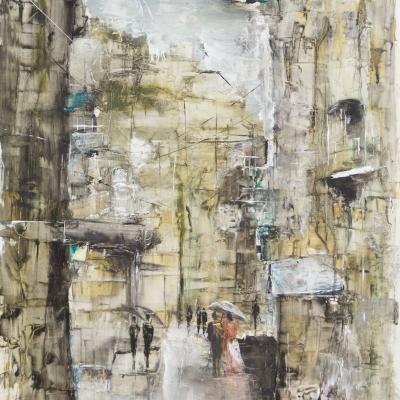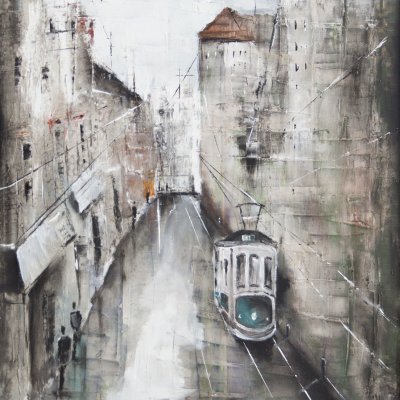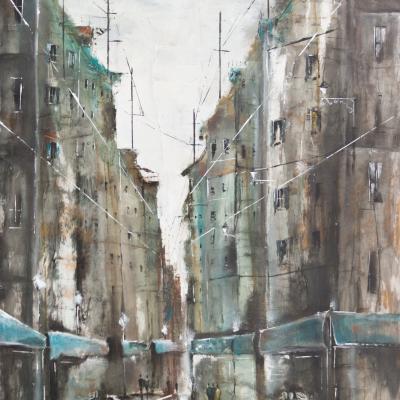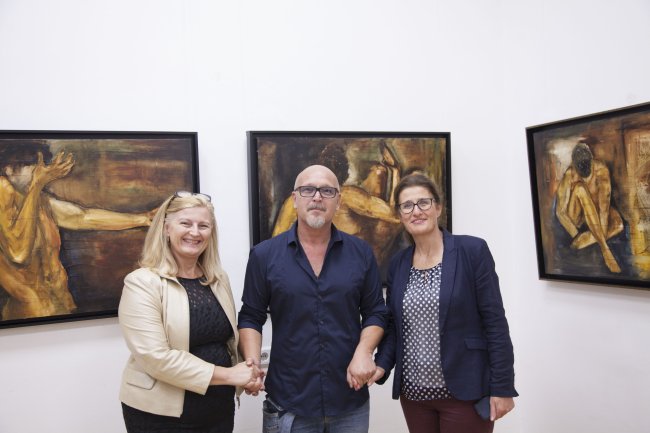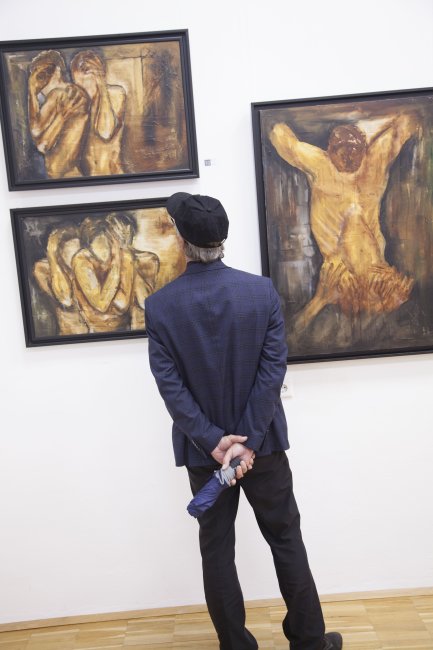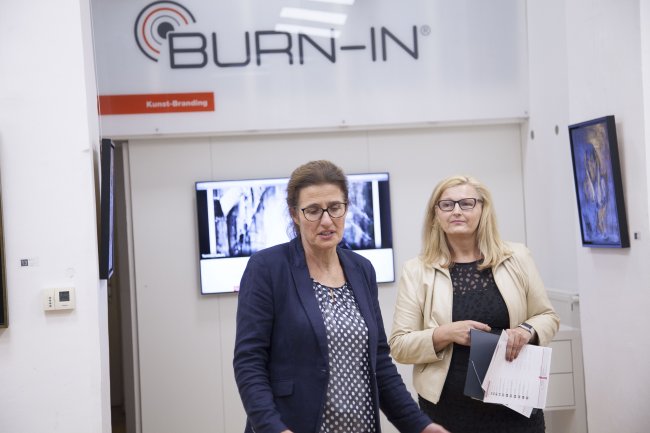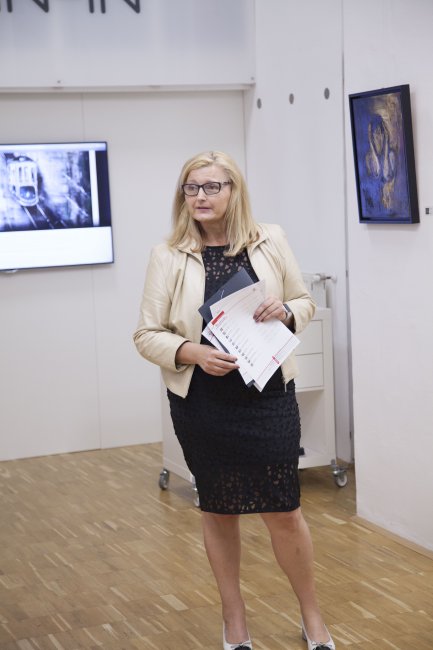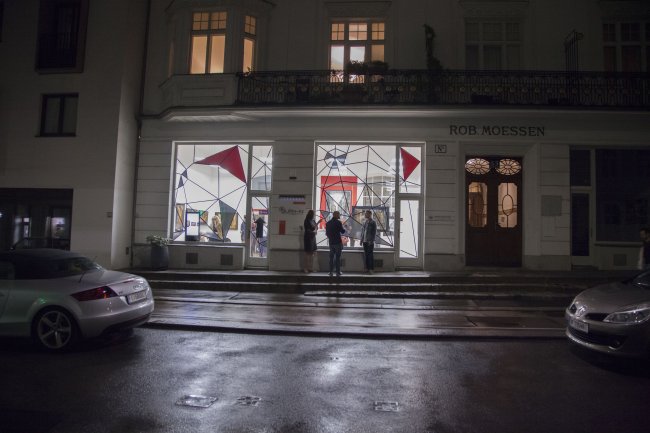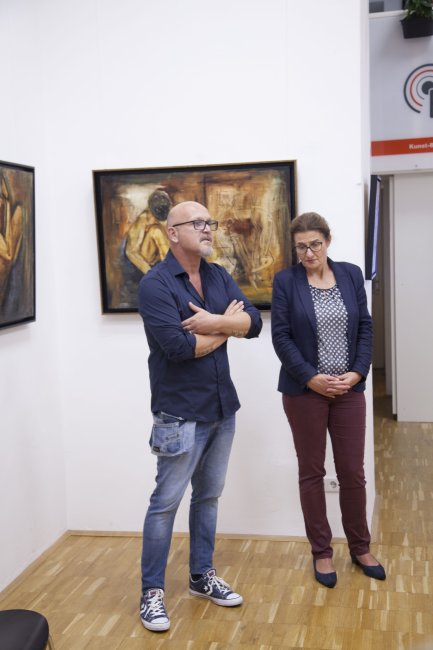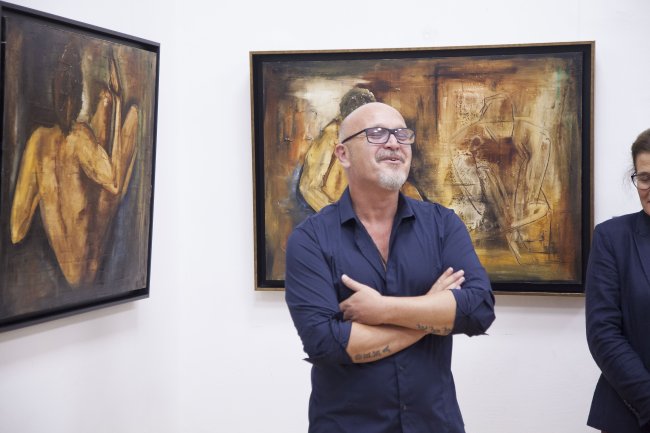Faith moves mountains.
Matttew 21, 18-22 | The Bibel
In September BURN-IN enters with the current exhibition Dok3na UMA and the cityscapes unknown areas, the deeply rooted beliefs. They represent an inner "map" of each individual and are the result of the experienced and felt. Mostly unaware, stored in a "limitless library".
doctrines
Limits
Perspectives
Horizons
This individual map corresponds to a subjective reality and forms the basis of our beliefs and value systems. This defines own boundaries, but also creates new horizons. Beliefs, attitudes and opinions nourish these convictions.
BURN-IN proudly presents all 11 works from Dok3na UMA (3 = Croatian tri | UMA = beliefs) by the Croatian artist Tomislav Sabolić, created in 2008. Dok3na UMA No. 6 is particularly outstanding because it achieved a top 10 ranking. Koh-i-Noor invited artists to a call for entries in 2009. There were more than 2,500 submissions, a real success story for the artist.
Sabolić worked with this series on his own beliefs and processed an extremely difficult phase in his life. The male nudes impressively document this really painful process.
In contrast, the 13 cityscapes present themselves in a very positive way, even under toughest conditions as rainy weather or other impassibilities.
With both series Sabolić shows the enormous importance of beliefs and their impact on life!
Current RTL interview with Tomislav Sabolić
Tomislav Sabolić has developed into a famous Croatian painter, especially by painting the cityscapes of his hometown. His unusual energy, the pursuit of an unmistakable visual expression, and the desire to explore new content have led him to turn away from proven content and have pushed him to create something new in his figurative compositions.
With Dok3na UMA, Sabolić shows the "archetypes" of the human body and relies on the proven, such as constitution, symmetry and rhythm. In essence, he always addresses the subject: the experience of man in relation to fellow human beings.
The act as a motif is his own personal visual diary, a document of feelings of life. Sabolić's naked human figures, faces hidden by hands or shadows, usually without any individualization, are expressions of a kind of dehumanization of the world.
In the limelight are characters of evil, who are embedded in an extraordinary, extravagant context and are the expression of the patient suffering with great patience.
Poses, gestures and spheres convey a high level of empathy. The viewer opens up a new world. He feels the difficulties, the helplessness, the pain. The need for hope, liberation and redemption awakens.
The strong expressiveness and drama of the psychologically charged compositions convince. As in previous works, Sabolić consistently uses a limited selection of black, brown, green and ocher, which contrasts sharply with the white background. He plays virtuously with materials and techniques, combining the relief-like, smoothed surface with a transparent color coating.
He remains within the realist perspective, the reality is interpreted in such a way that it does not care about details that are not essential to the overall impression of the image. The spiritual attraction of the artist is permanently transferred to the characters, and though hidden, testifies to the painter's psychological talent.
This courageous step in the painting of Tomislav Sabolić is undoubtedly an outstanding individual progress that contributes to the enrichment of Croatian culture.
Jelena Spevec, curator of the museum in Varaždin and the Biennale in Venice xx


